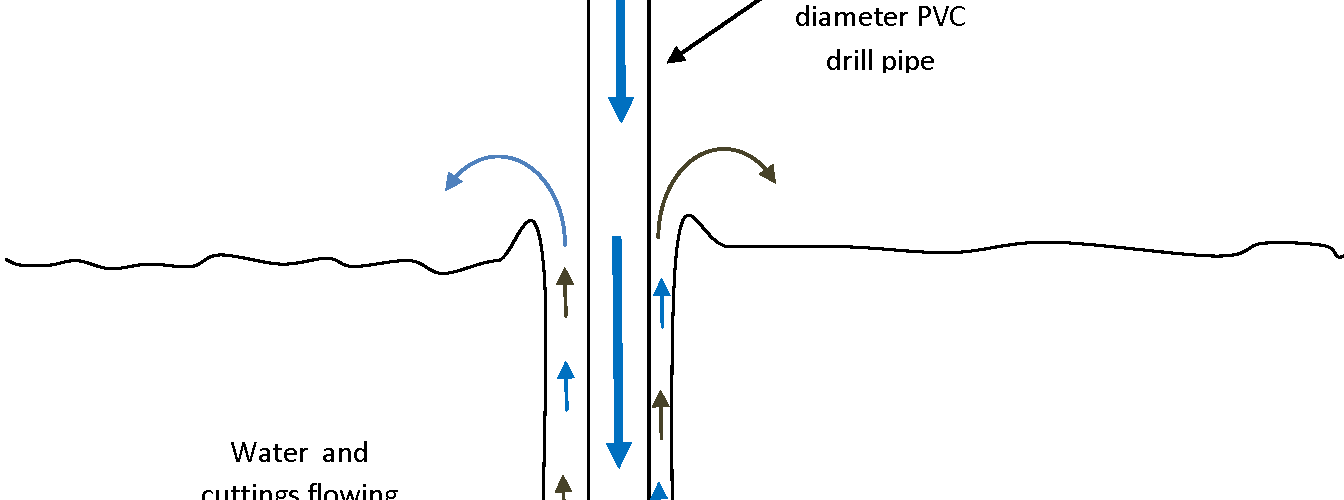Most Americans would be stunned to learn that there are presently more than fifteen million homes in the United States which have their own water well on property. In fact, in excess of fifty percent of our country’s drinking water comes from either privately owned or municipal government wells. It is estimated that more than six thousand new wells are finished every week in this country. Practically all such wells are drilled wells. This article examines the various different methods for drilling a personal well.
Generally there are three different methods utilized to drill water wells. These are air hammer, rotary, and cable tool. Although various different other ways exist, these three methods prove to be the ones most typically utilized. The majority of wells behind a house are drilled with six to eight inches diameter.
Air Hammer Drilled Water Wells
Air hammer drilling is typically employed in places where numerous hard rocks are present in the sub-surface layers. This technique utilizes compressed air to power an air hammer which is put down the hole on the bottom end of the drill string, which aids in breaking up the tough rocks. Another benefit of the compressed air lies in its ability to blow the pulverized rock pieces out from the hole and up to the surface. Any water which it encounters in the well while the drilling is occurring comes up with these rock fragments.
Rotary Drilled Water Wells
With rotary drilling for water wells, a drill bit is first affixed to a given length of attached drill pipe. This drill bit is typically constructed from tough metals like tungsten. When the drill rotates, the bit serves to grind up and pulverize the rock. The cuttings, or broken fragments, are subsequently flushed up and out from the hole via flushing a drilling mud, or drilling fluid, down into the drill pipe and then back up topside. The dual purpose of such drilling fluid is in its ability to lubricate and cool down the drill bit itself. It is capable of stopping potential cave ins from crumbling rock and shifting sands as it stabilizes the hole’s walls. This is critical until the well screen, or well casing, is finally put in to the well. Water flows into the hole itself when the drill meets up with water containing rock formations. The majority of well drillers cautiously keep tabs on the water strikes’ depths by making notes of the rock formations where they are found.
Cable Tool Drilled Water Wells
A final common drilling method explored here involves cable tool drilling, which utilizes a “pounder” machine. Here, a heavy drill bit is affixed on to the end of a wire cable. This bit and cable is dropped and raised back up again and again, gradually forcing its way down. Once in a while, rock cutting are bailed from the resulting hole. Because this technique is painfully slow, it has generally been abandoned in favor of the faster and more efficient rotary well drilling process. And still, this cable tool method claims the completion of literally millions of successful and still operating water wells throughout the world.
Casing the Well
Regardless of the water well drilling procedure utilized, the upper portion of the well is typically lined, or cased, with either plastic or steel well casing. The diameter of the casing is typically a good inch or two smaller than the drilled hole’s diameter. This resultant space in between the casing and the drilled hole itself must be filled in to eliminate the odds of polluted surface water getting down beside the outside of the well casing, since it could possibly contaminate the pure water aquifer. Such filling is referred to as grout, and it is commonly made of either bentonite, a unique volcanic clay, or alternatively of cement. From time to time, the majority of the well casing space is filled in with tiny sifted broken rock pieces from the drilling, while only the upper twenty feet is actually grouted.
<>



